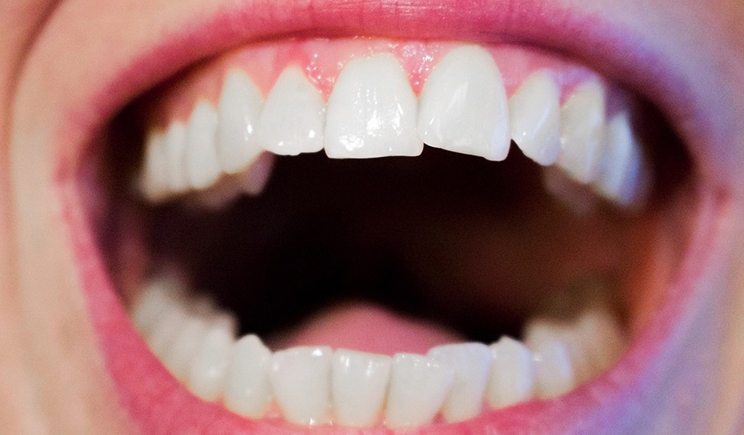Dentist, Oral Health
Jaws: The Story of a Hidden Epidemic
Sandra Kahn, DDS, MSD, and Paul Ehrlich, PhD
There is serious hidden epidemic that the public health community is just discovering. Its most obvious symptom is the growing frequency of children with crooked teeth wearing braces. But it also includes snoring, jaws hanging open, frequent stuffy noses, attention and behavioral problems, unrecognized disturbed sleeping (sleep apnea), and a general decline of physical appearance.
These symptoms indicate a building medical emergency that will likely catapult dentists, orthodontists, and sleep scientists into the front line of public health professionals. The emergency lies in the collection of serious diseases connected with mouth breathing and disturbed sleep, including heart disease, cancer, attention deficit hyperactivity disorder (ADHD), depression, schizophrenia, suicide, asthma, and perhaps Alzheimer’s disease.
Disturbed sleep is an extremely serious stressor of the human mind and body. Among other things, it tends to depress the immune system, making an individual much more vulnerable to a wide variety of diseases and resulting in myriad modifications to the brain that are only partially understood. Add to this the large contributions of sleep deprivation to highway accidents, medical mistakes, and poor performance at work and in school, and you can see how important this unrecognized public health emergency is.
The Dental Connection
The dental connection comes from poor jaw development, which can be traced back to environmental changes resulting from industrialization. One primary cause is a lifestyle that reduces the amount of chewing a developing child needs to do. Since industrialization, children are no longer weaned to the relatively tough foods their parents eat. Instead, they are switched to soupy baby foods.
Indeed, in their early lives, children often transition from pablum to a fast food diet that is becoming increasingly soft and liquid-like. Few kids get to gnaw on a tough buffalo haunch, instead feasting on hamburgers, cakes and candies that melt in their mouth, sugary soft drinks, and the like.
When mothers can nurse, many cannot do it for long enough, or they may pump their breast milk and have a caregiver deliver it through a bottle. They recognize this is excellent for the child’s nutrition, but nursing directly from the breast exercises the jaw muscles. Having milk poured into their mouths from a bottle, not so much.
This lack of exercise causes poor development of too small jaws, crowded and crooked teeth, impacted last molars (wisdom teeth), and unattractive long faces and receding jaws. To understand why hardly requires rocket science. Imagine how leg development would be affected if children were not allowed to walk.
Another environmental change that contributed to the epidemic was moving indoors, where things that cause allergies such as dust mites and formaldehyde concentrate. Allergies create stuffy noses, and that leads to mouth breathing. That, in turn, bypasses the natural air cleaning, warming, and humidifying functions for which the nose was designed.
Since the bottom of the nose is the top of the upper jaw, this changes the pressures of the air flowing through the nose and mouth, hindering jaw development. This phenomenon was documented long ago by experiments in which blocking the noses of rhesus monkeys produced great distortions in their jaws.
Potential Solutions
The “cures” for the jaw epidemic are simple in outline. First, we must return childrens’ diets to much chewier foods, perhaps even supplementing them with special tough chewing gums. We must also modify some current orthodontic techniques to emphasize forward movement of both jaws and avoid extractions.
Dentists should encourage “forwardontics,” a program focused on keeping the airway open, through sets of exercises designed to correct jaw “posture.” We have learned that how one’s jaws and tongue are held when not eating or talking is key to healthy jaw development.
At the public level, a determined and well-supported educational program will be necessary. At the personal level, healthy jaw development will require careful and long-term cooperation of children (and parents) who have not benefited from jaw-friendly rearing, all under the supervision of dentists familiar with forwardontics.
While new studies and books are making headlines about the rising epidemic of poor sleep, none have examined its startling relationship with poor jaw development until now. Jaws: The Story of a Hidden Epidemic uncovers this serious, mounting, but virtually unknown public health crisis.
Most people in industrial societies today do not recognize the facial distortion that is common, the spreading of sleep apnea, the extent of children wearing braces, or other symptoms of an epidemic in oral-facial health that can be traced to how most people eat and hold their mouths at rest.
People tend to accept the world in which they grew up as the standard. But what is common is not necessarily “normal” or healthy. There is growing evidence that a substantial portion of the population could have better lives when it comes to oral-facial health and the many consequences of its lack.
Indeed, if spreading knowledge about oral-facial health could become a civilization-wide priority, a huge dent could be made in the swelling epidemic of sleep apnea (and possibly a lesser dent in several other nasty diseases, ranging from heart problems and cancer to mental decline). Our hope is that many children and their families could avoid the medical consequences of poor oral posture and the high cost of correcting it entirely.
Dr. Kahn is a graduate of the University of Mexico and the University of the Pacific. She has 25 years of clinical experience in orthodontics and is part of craniofacial anomalies teams at the University of California, San Francisco and Stanford University. She can be reached at forwardontics.com.
Dr. Ehrlich has been a household name since the publication of his 1968 bestseller, The Population Bomb. He is Bing Professor of Population Studies Emeritus and president of the Center for Conservation Biology at Stanford University. He also is a member of the National Academy of Sciences and a recipient of the Crafoord Prize, the Blue Planet Prize, and numerous other international honors. He investigates a wide range of topics in population biology, ecology, evolution, human ecology, and environmental science. He can be reached at pre@stanford.edu.


